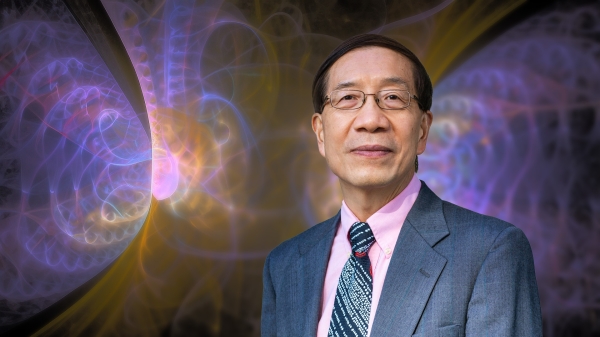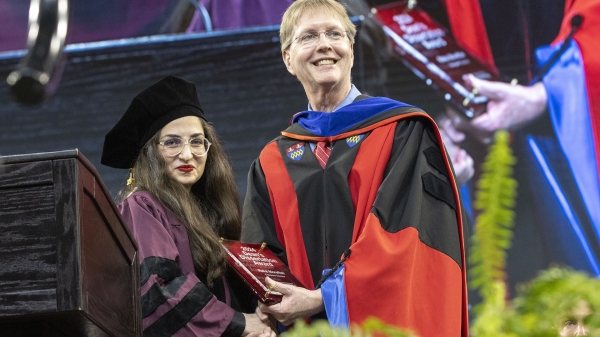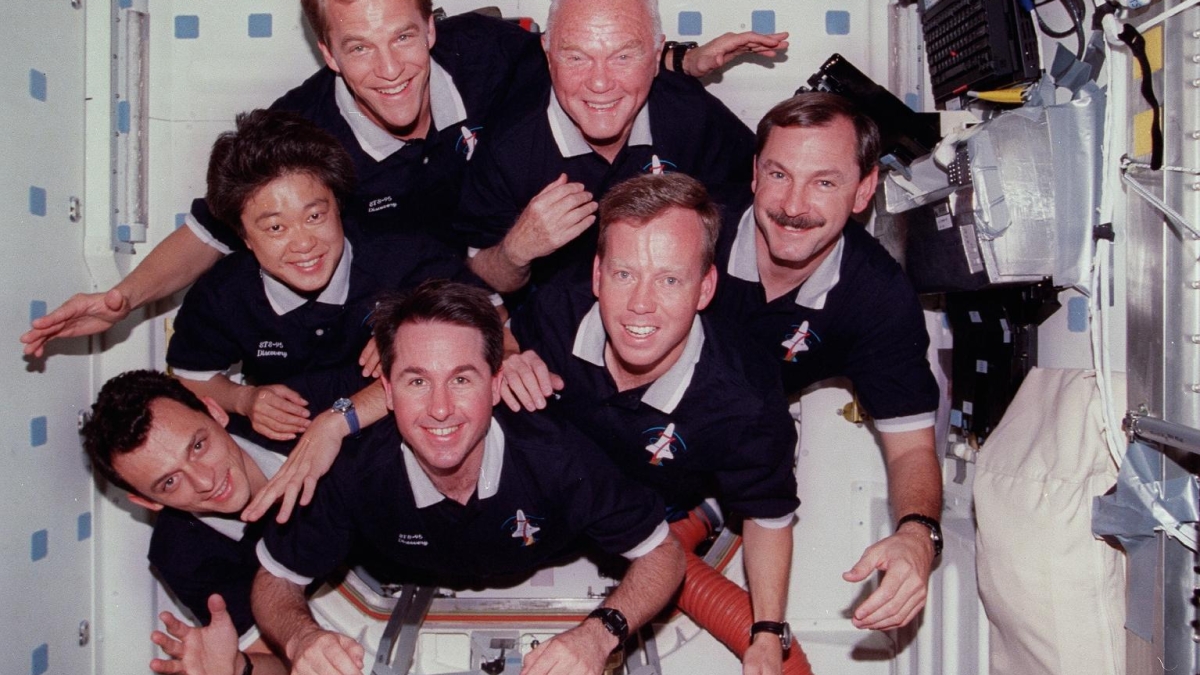John Glenn, the NASA astronaut and former U.S. senator, whose feats in the 1960s earned him entry into an elite club of bona fide American heroes, died Thursday at the age of 95.
Glenn was the last surviving of the original seven American astronauts. His flight three times around Earth in 1962 made him the first American to orbit the planet, captivating the nation.
He went on to a more than two-decade career representing his home state of Ohio in the Senate and, in 1998, returned to space setting a new record — that of the oldest American astronaut.
It was preparing for that flight, STS-95, that 77-year-old Glenn became colleagues and friends with Scott Parazynski, an astronaut, physician and now ASU university explorer and a professor of practice in the Ira A. Fulton Schools of Engineering.
Parazynski called Glenn a true American patriot and “one of the greatest Americans of our time.” In a conversation with ASU Now, he remembers Glenn and reflects on his life and what his passing means for the country.
Question: When did you first meet John Glenn?
Answer: I first got to spend time with him in January of 1998 after he became part of our crew. He walked in to the crew in a really unique and funny way. He said, ‘If any of you guys call me Sen. Glenn, I’ll ignore you. My name is just John or Payload Specialist No. 2.' That kind of set it. He just wanted to be one of the crew, no special treatment or favors. A very down-to-earth, humble guy.
Q: You’ve said that he had inspired you before you met. Was he the icon that you expected?
A: Much more. You imagine a persona based on what you see in movies — and the only rendering we had was grainy black-and-white movies and 'The Right Stuff.' We have this perception of what he must be like; I realized he had a great patriotism about him and a real sense of mission in life. But once I got to know him, I found out he was extraordinary in many, many ways. As a pilot, as an engineer, as a statesman. He really cared about people and was an amazing character.
Q: How did he operate on board the space shuttle?
A: He wanted to be a contributing, full member of the crew, which is pretty unusual for a payload specialist. Payload specialists often would come on board and have their particular science to do and limited additional training. But he jumped in with both feet. When he started training, he was still active in the Senate, then devoted full-time to training after he retired. He really wanted to be an integral part of the mission; that included routine chores that are part of everyday life in space, and some of the jobs are not so glamorous. This was a celebrated American icon, but he just wanted to be Payload Specialist No. 2. His joke was, ‘I’m just one step ahead of Payload Specialists 3 and 4.” He was very self-deprecating.
Q: How did you work with him as his personal physician?
A: He was involved in 10 different life-science experiments, ranging from sleep studies to analyses of his immune system looking at cardiovascular adaptation and [other] functions. A number of blood draws were required during the flight and he had to be instrumented with sleep gear on his body and EEG harnesses that I’m sure were not very comfortable. But he never complained. Then of course there was the concern that this was a 77-year-old man going into an extreme environment: What if something were to happen to him? Thankfully, he was in extremely fit condition, so I didn’t have grave concerns about him managing accelerations or living and working in space. But who knows? Nobody had ever done that before. I’ve often said if something happened to John, I might as well not come home.
Q: Does any personal story stand out for you?
A: Sure. He was a dear friend and a great spirit. Sharing an intense experience like that ties you together for life. But one of the fun memories that I have of him was that — while he was a test pilot and a marine and a war hero — he was kind of a wimp when it came to needles. So one of the things I did was to sneak aboard a pair of Halloween Dracula fangs and spooked him on the flight when I was about to draw blood. We talked about that pretty much every time we saw each other in the years after. He called me Dracula or Count Parazyn-scula. He was really a humble giant among men.
Q: How important was John Glenn to NASA and the space program?
A: He took on one of the most outlandishly dangerous missions of all time when he rode Friendship 7 into orbit. It was the first orbital flight that the Americans had flown and two prior flights had blown up, you know? So the stakes were high. But he was an American patriot first and a Marine: He assessed the risk and the value of the mission and went on. Just as he had as a fighter pilot in wartime, then fought for what he thought was right over 24 years in the United States Senate, and then came back again to fly on the shuttle, which was not a trivial risk either. He was first and foremost a true American patriot, one of the greatest Americans of our time.
Q: What does his passing mean, for you and the country?
A: I feel a great void. It is a personal loss and a national loss. He was a real treasure to those who knew him and those who knew of him and what he had done. I think for future explorers and hopefully for future statesmen — and we certainly need statesmen in this day and age who can bring us together — he is a role model. There is a lot that has been written about him and lots of ways we can learn from his successes.
Top photo: Scott Parazynski (top left) John Glenn and the crew of STS-95 aboard the space shuttle Discovery in 1998. Photo courtesy NASA.
More Science and technology
Extreme HGTV: Students to learn how to design habitats for living, working in space
Architecture students at Arizona State University already learn how to design spaces for many kinds of environments, and now they can tackle one of the biggest habitat challenges — space architecture…

Human brains teach AI new skills
Artificial intelligence, or AI, is rapidly advancing, but it hasn’t yet outpaced human intelligence. Our brains’ capacity for adaptability and imagination has allowed us to overcome challenges and…

Doctoral students cruise into roles as computer engineering innovators
Raha Moraffah is grateful for her experiences as a doctoral student in the School of Computing and Augmented Intelligence, part of the Ira A. Fulton Schools of Engineering at Arizona State University…
